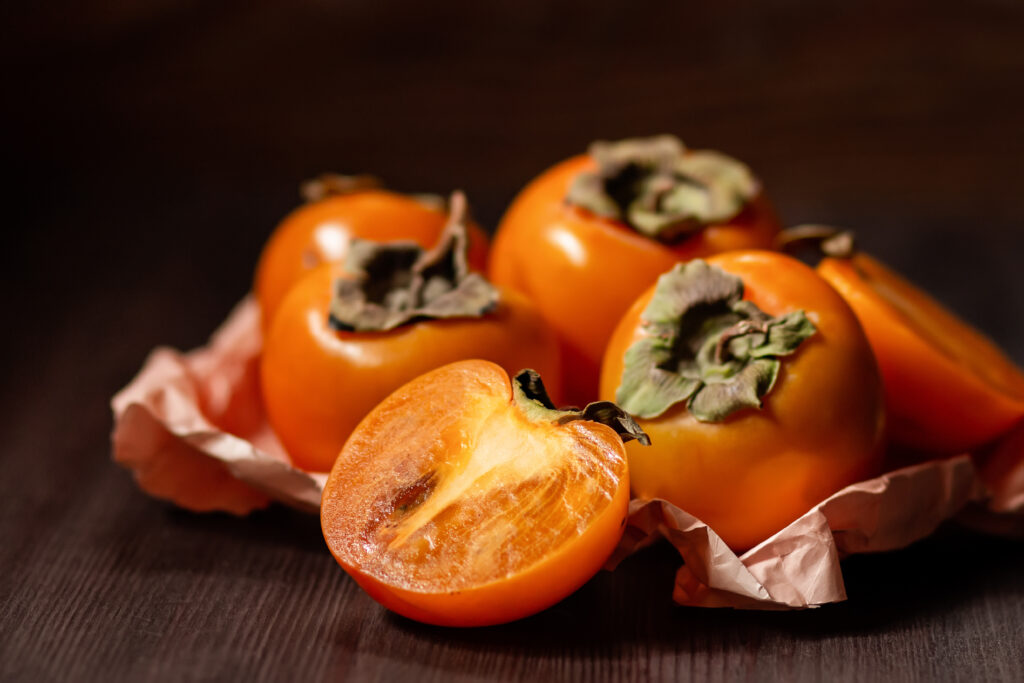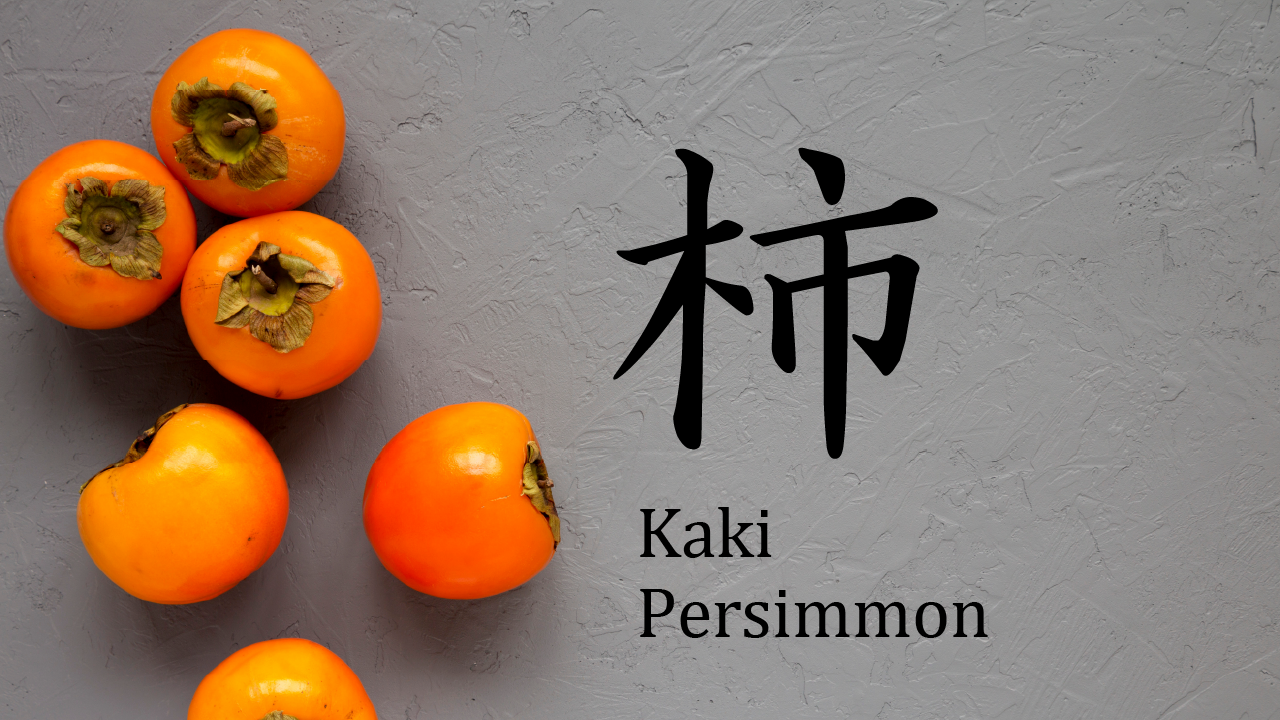Persimmon is too red, and Terracotta doesn’t quite capture the texture. When I try to find a matching color for this fruit in the Western color palette, nothing really satisfies me. But in the Japanese color vocabulary, I can find several shades that feel just right. That fruit is kaki. Maybe the reason this fruit feels so Japanese is not just its flavor, but also its color. Today, I want to introduce this understated, quietly beautiful fruit that I personally love.
Did you know there are two types of persimmons?
The sweet variety is what most of us think of when we hear “persimmon,” but originally, only astringent persimmons existed. These can’t be eaten fresh due to their intense bitterness, but when dried, they become sweet. Archeological finds show that even in the Jomon period (thousands of years ago), people were already enjoying dried persimmons.
In the Kamakura period, a natural mutation gave rise to the first sweet persimmon—the kind that can be eaten fresh. This is the type of persimmon now known globally as “kaki.”
Types of sweet persimmons
- Fuyu: Japan’s most iconic variety, known for its thick flesh, sweetness, and crisp texture.
- Jiro: Seedless, easy to cut, and popular as a gift.
- Taishu: Known for its light, refreshing sweetness, almost like a pear.
These top three are widely available in Japan during the fall. Since persimmons are grown in many regions (excluding Hokkaido and Okinawa), you’ll typically find local varieties in supermarkets.
I often buy the seedless ones, which go for around 200 yen each. While most persimmons do have seeds, there are specially cultivated seedless types labeled as “Tanenashi kaki.” The flavor is virtually the same, but I find the seedless ones much easier to enjoy.
For gifting, you can buy beautifully boxed premium persimmons that cost over 2,000 yen each. These are not just delicious but also visually stunning—a true example of Japanese craftsmanship in fruit cultivation.
Where can we taste Japanese Kaki?
Although persimmons are deeply embedded in Japanese culture, they don’t enjoy the same popularity as other fruits. I think this is because they’re difficult to pair with other ingredients. Their unique sweetness doesn’t blend well with most desserts or savory dishes. They shine brightest when eaten on their own. That’s why you rarely see them in parfaits or cakes.
If you’re traveling in Japan and want to try persimmons, I recommend visiting a wagashi (Japanese confectionery) shop in the fall. You might find seasonal creations that incorporate persimmons in elegant ways. One excellent example is the “Kaki Koromo” from HIGASHIYA, which beautifully marries Japanese and Western flavors.
https://www.instagram.com/higashiya_higashiya/?hl=ja
There are also a few cafes that serve persimmon parfaits in autumn. One you can try is Kannon-yama Fruit Parlor in Ginza, Tokyo.
https://www.instagram.com/kannonyama.ginza/?hl=ja

Tannin: The subtle power behind the flavor
The slight bitterness in persimmons comes from tannin, a type of polyphenol. It’s also found in wine, tea, coffee, and dark chocolate. Here are a few benefits of tannin:
- Antioxidant: Prevents cell aging and supports healthy skin.
- Antibacterial & antiviral: Helps regulate gut health and boosts immunity.
- Prevents fat oxidation: Useful for lifestyle disease prevention.
- Astringent effect: Tightens pores, often used in skincare products like persimmon soap.
While persimmons have many health and beauty benefits, it’s best not to overeat them. Tannin can react with stomach contents and form solid masses. Normally, these dissolve with other food, but eating too many persimmons daily could result in persimmon stones. Stick to a maximum of two per day. Some say drinking cola may help break down those solids, just in case you overindulge.
Kakinoha-zushi: Sushi wrapped in persimmon leaves
In Nara and Wakayama, there’s a traditional dish called kakinoha-zushi. Before refrigerators existed, people used the antibacterial properties of persimmon leaves to preserve fish. The sushi is made by placing a slice of fish (like mackerel or salmon) on rice, then wrapping it in a persimmon leaf and gently pressing it.
When you unwrap the green leaf, the contrast between the white rice and colorful fish makes for a beautiful presentation.
You can try this dish at various restaurants in central Nara. One well-known place is Tanaka.
https://www.kakinohasushi.co.jp/en/
Kakishibu: Persimmon tannin as dye and coating
Persimmons aren’t just for eating. In Japan, unripe green persimmons are crushed to extract a tannin-rich liquid called kakishibu. When used as a dye or coating on paper, cloth, or wood, it provides antibacterial, waterproofing, and insect-repelling effects, along with a deep earthy brown color.
Kakishibu is now being rediscovered as an eco-friendly, natural material in crafts and art.
In conclusion
Japanese people are often described as modest and understated—and I think persimmons are the same. They don’t show off, but they quietly offer depth, beauty, and meaning. Their color, flavor, and role in culture feel uniquely Japanese to me.
Is there a fruit in your country that captures the essence of your culture the way persimmons do for Japan?
